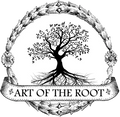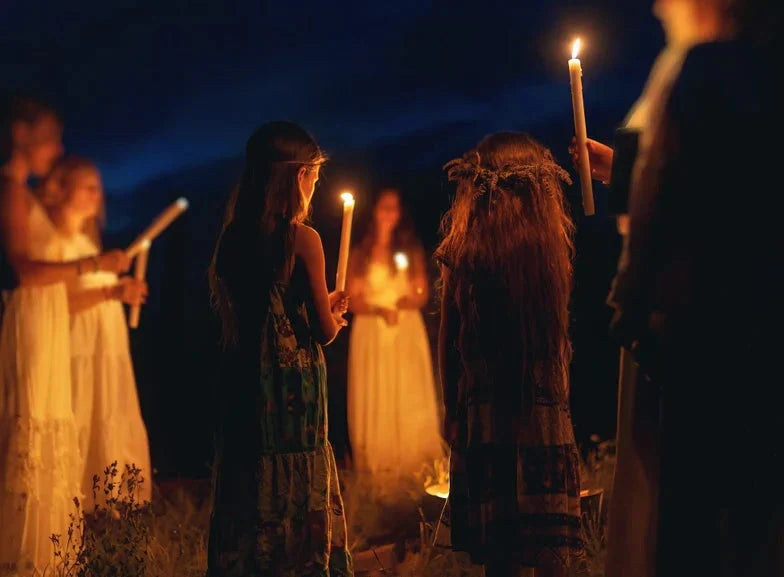What is Traditional Witchcraft? Its Practices, Beliefs, and Types
Introduction to Traditional Witchcraft
British traditional witchcraft is one of the more interesting and well-loved nature-based religions. In this practice, practitioners or witches connect to spirits, ancestors, and other types of beings to accomplish their magical goals. One of the main emphases is on the seasonal and natural cycles of nature.
Practices and Beliefs
Practitioners who practice traditional witchcraft consider themselves a part of both nature and the spiritual world. Not only does this world include the natural order of things, such as seasonal changes, but it also includes the connection between humans and spiritual beings. Practitioners believe that this connection to nature enables them to use magic as a way to interact with the world around them. One of their primary goals is connecting with a higher spiritual energy. This higher energy gives them the ability to work with spirits, ancestors, and other types of energies to help achieve their magical goals.
Another important aspect of traditional witchcraft is its secrecy. Historically, traditional witchcraft has been performed in secret. Magical rites are often hidden from outsiders and remain part of a hidden world known only to specific groups of people. According to historian Richard Hutton, these rituals and practices tend to be passed down from teacher to student through some type of initiation ritual. Hutton also states that by placing a focus on secrecy and initiation rites, traditional witchcraft practices have been preserved over time.
Rituals and Rites
Rituals and ceremonies also play a significant role in traditional witchcraft, and there are many varied customs and practices that are often passed down. Depending on their lineages, different groups can have their own set of practices and beliefs. According to professor and anthropologist Sabina Magliocco, traditional witches frequently use ritual objects like wands, knives, and cups to help focus their energy and intentions during magical workings, Magliocco also notes that music and dancing are frequently used in traditional witchcraft ceremonies. This can help induce a trance-like state that enables the practitioner to communicate with spirits and other beings.
Another important element of traditional witchcraft rituals is the use of symbolism and imagery. According to Ethan Doyle White, a historian at University College London, traditional witches often use ancient mythologies and folklore to create an intricate framework of symbolism. This provides them with the structure for their rituals and ceremonies. These symbols can include images of animals, plants, and celestial bodies, as well as elements such as fire, earth, and water, as well as four directions; north, south, east, and west.
The Sacred Circle
The circle plays another important role in traditional witchcraft. Circles can be used in a number of ways, but their primary purpose is to create a type of boundary. This boundary provides a space that is sacred and shielded from negative energies or forces. This enables the practitioner to perform their magical rites and rituals without the influence of other spiritual forces. By entering the circle, the practitioner can connect to the spiritual world and separate themselves from the everyday world.
Depending on the particular beliefs of the practitioner, the circle is cast using a specific set of tools and/or techniques. Some practitioners use wands, a knife, a staff, or even a rope. Others may use rocks or natural settings that provide a circular boundary where rites are performed. Some practitioners may also chant or use a visualization technique to create a circle. The practitioner then calls upon the spirits or entities that they wish to work with. This typically starts the process of their ritual or ceremony. Once the circle is cast, the practitioner may also choose to work with the four directions or elements to enhance their magical intentions.
In traditional witchcraft, the circle plays a significant role. In essence, it creates a boundary, that is both physical and spiritual. This represents the "liminal" space between the earthly and spiritual worlds. In traditional witchcraft, the concept of liminality refers to a trance-like state of being where the practitioner can exist in a space where the everyday world and the spiritual one coincide. This idea is associated with the use of circles in magical in general. The practitioner's connections and interactions with the spirits or other spiritual beings are commonly referred to as the “liminal weave”. There is an interwoven dance and connection that occurs between the practitioners and spiritual beings. Their energies are woven together like a web or weave that links the two worlds together.The liminal weave is seen as a reciprocal act. The relationship between the practitioner and the spirits is a shared experience. Spirits can provide the practitioner with guidance, knowledge, power, protection, or other forms of assistance. The practitioner, in return, offers gifts or offerings for their help and assistance. This is a mutually beneficial exchange.
Traditional Witchcraft Types
With numerous traditions and lineages, traditional witchcraft is a complex and multifaceted practice. There is no “one way” to practice traditional witchcraft. More importantly, there are many different types of schools of traditional witchcraft. Here are a few of the most well-known.
Gardnerian Wicca
Gardnerian Wicca is among the most well-known types of contemporary witchcraft. Gerald Gardner established the Wicca practice in the 1950s. Within this practice, there is a strong emphasis on the worship of the Horned God and the Goddess. It is a complex system that emphasizes seasonal changes and uses a sophisticated system of rites and ceremonies.
Alexandrian Wicca
Like Gardnerian Wicca, Alexandrian Wicca was established by Alex Sanders in the 1960s. Although similar to Gardnerian Wicca, Alexandrian Wicca places a greater focus on ceremonial magic as well as the use of symbolism and imagery in its rituals.
Feri Tradition
Another traditional witchcraft methodology is that if the Feri Tradition. The Feri tradition was established in the 1950s by Victor and Cora Anderson. It is influenced by many different spiritual and magical traditions, such as African American folk magic, Celtic mythology, and Kabbalah.
In essence, the phrase "traditional witchcraft" can be used to describe a wide range of practices that are based on pre-modern witchcraft customs. Its common theme relies on the use of certain initiation rites, its secrecy, and the implementation of natural magic. It has a strong connection to the use of the natural world, its seasons, and its magical elements.
Sources
- Feraro, Shai. "The Craft of the Wise: An Anthropological Perspective on Traditional Witchcraft." In Witchcraft and Belief in Early Modern Scotland, edited by Julian Goodare, Lauren Martin, and Joyce Miller, 139-153. Palgrave Macmillan, 2008.
- Hutton, Ronald. The Triumph of the Moon: A History of Modern Pagan Witchcraft. Oxford University Press, 1999
- Magliocco, Sabina. "Traditional Witchcraft, Folk Magic, and the Pagan Revival." Western Folklore 64, no. 1/2 (2005): 67-87.
- Valiente, D. (1987). Witchcraft for Tomorrow. Robert Hale Ltd.






Leave a comment